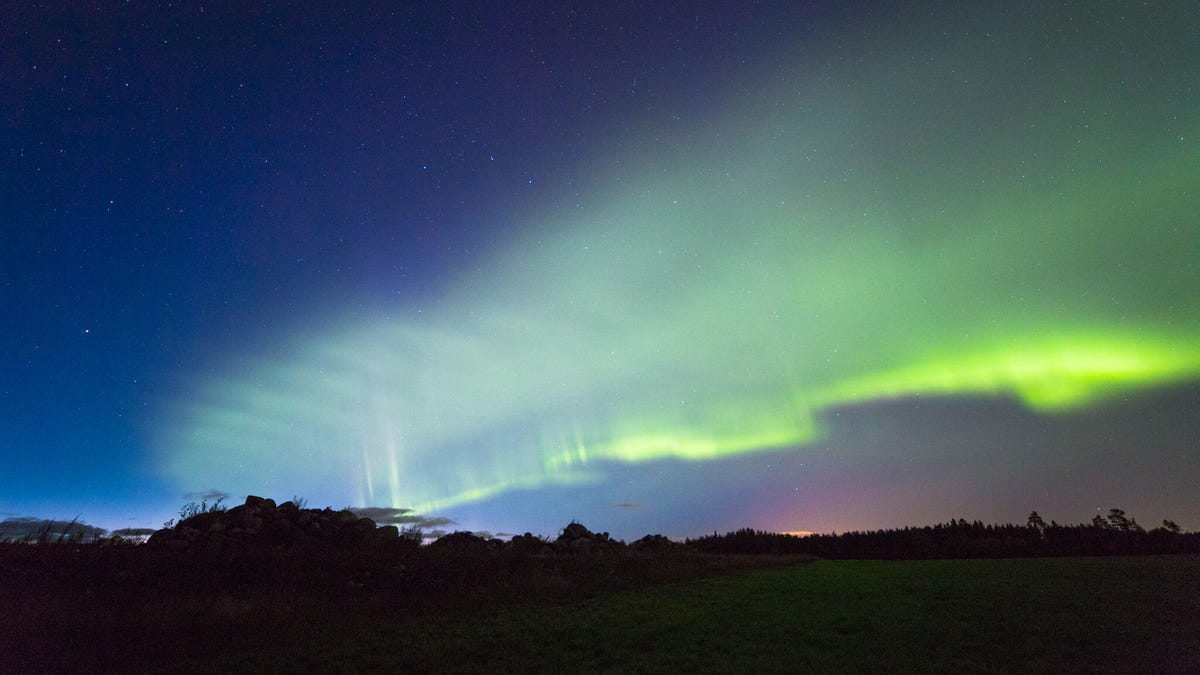Amateur photographers spot new aurora that looks like glowing green dunes
Meet a newly discovered form of northern lights that let scientists observe invisible atmospheric waves.

Auroral dunes photographed on Oct. 7, 2018 near Laitila, Finland.
For millennia, humans have been mesmerized by the high-latitude displays of the aurora borealis, or northern lights, and aurora australis, or southern lights. Yet somehow, a new form of the light show has just recently been discovered.
Amateur aurora photographers first documented the new form dubbed "the dunes" in Finland in October 2018. They tipped off scientists, who say the dunes aren't only a previously unknown auroral phenomenon, but could help researchers see and study invisible and mysterious atmospheric waves.
"For the first time we can actually observe atmospheric waves through the aurora -- this is something that hasn't been done before," said Minna Palmroth, a space physicist at the University of Helsinki, in a release.
In these images, the edge of the dunes are marked with numbered points in purple.
Palmroth previously wrote a guidebook to observing aurora and was contacted in 2018 about the dunes.
"Some of the citizens saw the dunes in the sky, and they told me I had excluded one auroral form from the book," Palmroth said.
The amateurs seemed to have caught a shape of aurora never before captured by aurora scientists. While aurora frequently appear in the shape of rippling vertical curtains, the dunes stretch horizontally with thin tentacles of green light stretching toward the horizon.
Palmroth and other physicists worked with the amateur observers to gather more data on the phenomenon and came up with a theory on how the dunes form that is laid out in a new study published Tuesday in the journal AGU Advances.
Their suspicion is that the dunes are actually a visible manifestation of atmospheric waves, which are air currents in the upper atmosphere. This region can be affected by changes in energy from the lower atmosphere, as well as the sun, which emits the energetic particles that create auroras upon collision with Earth's magnetic field.
"The dunes present a new opportunity to investigate the coupling of the lower/middle atmosphere to the thermosphere and ionosphere," the study reads.
Energy fluctuations at these levels of the atmosphere can also have an indirect affect on the movements of satellites and spacecraft.
"Different auroral forms are like fingerprints," Palmroth said. "If you see a certain auroral form, you know basically from that form what's happening further out in space."
And the dunes might be tied to a specific kind of atmospheric wave called mesospheric bores that occur in a region of the atmosphere that's hard to reach because it's too high for planes and balloons but too low for satellites.
"This is a totally new topic," Palmroth said. "We are rather excited."
Originally published Jan. 29. 3:46 p.m. PT.

